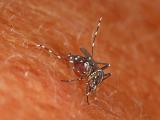Jul 5, 2012 (CIDRAP News) – A review and mapping study to gauge the burden of zoonotic diseases found that Ethiopia, Nigeria, Tanzania, and India are four top hot spots and that a surging demand for livestock products will likely fuel the spread of several diseases.
The report was designed to help global health officials target disease-fighting resources to best help the poor. The 119-page study was conducted by the Kenya-based International Livestock Research Institute (ILRI), the UK-based Institute of Zoology, and the Hanoi School of Public Health in Vietnam.
Besides offering a detailed view of the interplay between poverty, farming practices, climate change, and zoonotic diseases, the report also provides a vivid snapshot of the overall global burden of animal-human diseases. The group estimated that 13 of 56 zoonoses they studied are responsible for 2.4 billion human illnesses and 2.2 million deaths each year, mainly in low- and middle-income countries.
Delia Grace, PhD, a veterinary epidemiologist and food safety expert with the ILRI, said in a EurekAlert press release today, "Targeting the diseases in the hardest hit countries is crucial to protecting global health as well as reducing severe levels of poverty and illness among the world's 1 billion poor livestock keepers."
A literature review and analysis of other reports indicated that nearly three-fourths of the rural poor and one-third of the urban poor rely on livestock, which provide low-income households with up to half of their income and between 6% and 35% of their protein.
Though the booming global demand for meat and milk products provides promising economic opportunities for livestock producers in poor countries, the presence of zoonotic disease in many developing countries poses an obstacle that can lead to more poverty and hunger. The researchers found a 99% correlation between national malnutrition and zoonosis burden.
Steve Staal, PhD, MSc, deputy director general for research at the ILRI, said in the press release, "Many poor livestock keepers are not even meeting their own protein and energy needs. Too often, animal diseases, including zoonotic diseases, confound their greatest efforts to escape poverty and hunger."
The fastest-growing livestock sectors in developing countries are poultry and pigs, which, in poorly managed systems where production is intensifying, with more animals being raised in smaller spaces, pose a growing zoonotic disease threat, according to the researchers.
The group found that livestock density is linked more with disease "event emergence" than with overall disease burden. For example, the United States and Western Europe have high densities of livestock and high levels of disease emergence, such as bovine spongiform encephalopathy and Lyme disease, but low numbers of human illnesses and deaths from zoonotic diseases.
John McDermott, DVM, director of the Consultative Group on International Agricultural Research (CGIAR) Research Program, led by the International Food Policy Research Institute, said in the statement that high-density pig and poultry populations have played a key role in maintaining and mixing influenza populations. "A major concern is that as new livestock systems intensify, particularly small- and medium-sized pig production, more intensive systems will allow the maintenance and transmission of pathogens," he said. "A number of new zoonoses, such as Nipah virus infections, have emerged in that way."
The most rapid changes in pig and poultry farming are expected in Burkina Faso, Ghana, India, Myanmar, and Pakistan, according to the report.
The analysis also revealed gaps in disease reporting in developing countries, despite increased support that materialized in response to influenza concerns. It suggested that though the literature is useful for understanding diseases and their impact, more and better information can be obtained from field surveys and that technology advances such as biological repositories could help improve disease epidemiology and control.
Grace concluded that the findings could offer a useful road map for policymakers. "These findings allow us to focus on the hotspots of zoonoses and poverty, within which we should be able to make a difference," she said in the statement.
See also:
Jul 5 EurekAlert press release
Full report "Mapping of Poverty and Likely Zoonoses Hotspots"



















